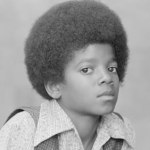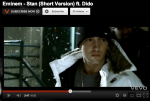How to Study Music Video is an article written by Pete Fraser in Media Magazine. The article explains that many people believe that music videos and MTV has made music superficially image based however the sounds are the basis of the visualisation in which the music video is created; the video should enhance the music rather than restrict its originality. The quote from Andrew Goodwin’s ‘Dancing in the Distraction Factory’ is used in the article; “a clip that responds to the pleasures of music, and in which that music is made visual, either in new ways or in ways that accentuate existing visual associations”
. Fraser states that more often than not the song alone is not completely influential; if accompanied by the added value of star image created by a music video, CD covers and live performances this is more influential on the consumer and subtly persuades them to purchase the music.
As the title suggests Fraser does in fact teach us how to study a music video; the factors which must be considered when deciding if a music video is good are:
1. Thought beats – synaesthesia is another way of describing this. It is a psychological process which involves picturing the sounds in the mind. This is central to a good music video as it builds on the song’s visual associations which enables the consumer to have a better connection with what they see and provides further pleasure.
This approach starts with the layering of sounds in the song being broken down; lyrics do not need to be fully analysed but if there is a semantic field for example, where the songs sound sad and gloomy, the images in the video should fit in with this. Also not many lyrics are wholly narrative in a song, so key phrases can be emphasised and will play a part in the narrative of the video.
Roland Barthes’ ‘
grain of voice‘ theory is relevant here. What this means is that the voice of an individual if totally unique; like a fingerprint. For instance Michael Jackson’s yelp has become prominent and has set him aside from other artists. These trademarks work in favour of the individual’s star image.
If a song’s lyrics are narrative often the music video will be narrative to the lyrics. This makes the video stand out as the artist is performing in the first person narrative. Andrew Goodwin compares artists to stand up comedians; they both have a signature trademark which dominates the performance. Usually the arrangement of the song, including instrumentation, the mix and effects works alongside the lyrics and the grain of voice. We take into consideration the build of the song – it’s tempo, structure in terms of verse, bridges and chorus. As humans we link memories to our senses. In terms of sound and more specifically music, for example, if we hear the strum of a ukelele we might imagine it to be a beautiful summer’s day and there are a group of friends in a large field having a picnic singing along to the ukelele.
Intertextuality helps us conjure up these images, essentially it is a shared memory bank in which we
all associate the same things with our senses. From this memory bank music can draw out memories of of times, people, places, feelings, situations which all lead to small narratives. Sometimes the music can bring out memories of our own walks of life, a particular memory personal to an individual. This can form the basis of music video creativity.
2. Narrative and performance – songs don’t often tell us a complete narrative, it is often broken. As we are used to studying them with other media texts such as film, we get a sense of a narrative from the representation of the song’s meaning. Often we can take a vague story line from the video.
Song’s
shouldn’t tell us a complete narrative. They need to have the
repeatability factor included in them as they primarily are advertisements for the song or artist, they are not stories. Often music videos will cut between a small hint of a narrative an the artist performing the song or an aspect designed to enhance the visualisation and image of the video. Sometimes the singer will be included in the narrative, but it is the
lip syncing or
mimed performance that bring us back to the song itself.
We need to believe in the
authenticity of the performance, which helps us to know that pop music is a romantic art, truth, talent and magic!
3. Star image – the music industry and record labels rely on a few of their signed artists to produce a sufficient income for themselves. Only about one in ten artists they sign product any profit at all.
The
meta-narrative of the star image is the building and changing of a star’s image over a period of time and how this can influence the consumers.
Example: Michael Jackson

It would be unfair to say that Michael’s meta-narrative has been easy. In recent years he has lost control and their have been some significant moments in his meta-narrative of pop stardom. One is his successful transitions was from being a member of the Jackson 5, often recognised as his central talent, to a solo artist. Through the use of his signature sound and his image he experienced an extremely successful career as a solo artist.

However during the 90’s his meta-narrative took a turn for the wrong. His unique star image became self centred and weird. Perhaps his Jackson 5 talent made this image seem even more extreme, but laying such successful foundations and changing his image so drastically is debatably a bad move for his meta-narrative. Despite this, he is still the talking point of so many of us; we talk about how odd he has become and the uncertainty of his culture, thus keeping him in the limelight; keeping him a star. In each music video Michael created he attempts to overcome and correct the unfortunate bad decisions made which affect his meta-narrative however we cannot always overlook them. We still see him as this freakish person. His meta-narrative is not a manipulation it is a dialogue surrounding his life and his image; whether we accept it or not is a different matter. He tries to regain control of his meta-narrative through the use of his music videos and sometimes we can forget the bad stigma for a few minutes and just enjoy the video and the song.
4. Three ways in which music videos relate visuals to the song –

- illustration – music videos can illustrate the meaning of lyrics and genre providing a sometimes over literal set of images. This is the most straightforward technique and the classic example of visualisation, with everything in the music video based on the source of the pop song. The music video for ‘Stan’ by Eminem is a good example; a visual translation of the song’s dramatic narrative.
- amplification – seen as the mark of the true music video Auteur, the director of the artist, and an increasingly common way to view music video creatives. (VH1’s Best 100 videos clearly placed Spike Jonze in the Auteur category with his work always amplifying the original songs meaning and effect, usually through surreal humour). Crucially, though, and what separates it from disjuncture is the fact that amplification music videos retain a link with the song and work to enhance or develop ideas rather than fundamentally changing them.
- disjuncture – a term used to describe those music videos that (normally intentionally) seem to work by ignoring the original song and creating a whole new set of meanings. This is quite radical technique and used by arty bands in order to assert their difference and originality. Usually, disjuncture videos of this type don’t make a lot of sense and may be based on abstract imagery. For example in Spike Jonze’s video for Daft Punk’s ‘Da Funk’ we see a man with a dogs head and his arm in a cast walking around New York, ignored by all, with dialogue completely unrelated to the song itself. Sometimes though, disjuncture videos are bad, ill conceived and self-indulgent mistakes.
5. Technical aspects of music video – including
camera work, movement and angle, mise-en-scene, editing, and sound. Technical conventions:
Speed – visualised by camera movement, fast editing (montage) and visual effects.
- camera movement: motivated by running, dancing or walking performers
- fast cutting and montage editing: creates a visually decentred experience necessary for music video consumption, with the images occasionally moving so fast that they are impossible to understand on first viewing and thus need to be viewed several times (repeatability)

- post production digital effects: where images can be colourised, multi-split screens appear etc. to complicate and intrigue, providing entertainment. Not all camera movement is about fast speed though, some use slow pace through dissolves or static shots. This kind of editing, like in Sinead O’Connor’s ‘Nothing Compares 2 U’ is striking and effective is setting the song apart from the hustle and bustle of most pop activity.The majority of most music videos is the cut to the close up of the singer’s face. This is because the voice is seen as the most important part of the pop video.
Beats – video represents music by the different cuts of sequence in time with the music’s beat or key rhythm.
Lighting and colour – can be used to emphasise key moments in the song e.g. lighting live performances for dramatic effect. Colour may be used to show a development in the song, going from colour to black and white or vice versa when the chorus comes in. Equally any change in the mise-en-scene or camerawork can signal the same type of thing.
Mise-en-scene – the setting for music videos is important, often to guarantee the authenticity of the clip. Mise-en-scene for many music videos is the concert hall or studio to emphasise the reality of the performance or the hard work and practice that goes into attaining star quality. Increasingly, CGI is used, especially for dance songs, which don’t rely so much on being ‘real’ like rock, soul, rap acts.
Personally I think that music videos themselves can be wonderful extensions of a song, adding ideas and entertainment on top of the primary wonder of the song, however in today’s society, self respect and dignity are ebbing away and so in line with this the same qualities are fading in music videos. It is becoming more common for people to wear very revealing clothes, sometimes no clothes, however unethical this may be, so I believe that music videos were once a form of art but unfortunately they are now beginning to turn into soft pornography.















